
Guide
Linseed oil instead of salmon? Why there’s no need to go fishing for omega-3
by Anna Sandner

So-called superfoods promise health and fitness. But you don’t need an acai berry from the Amazon rainforest. Good old blueberries from the garden bush and other local, healthy foods are enough.
They come from far away and are considered incredibly healthy: we’re talking about superfoods. Quinoa, acai, chia and the like boast a range of nutrients, but they’re mostly imported from Asia or South America, and not only do their long transport routes put a strain on the environment, their high prices also put the squeeze on your wallet.
Domestic alternatives are just as good when it comes to the range of nutrients on offer. And better yet, they can be grown locally, often have lower pesticide exposure and are significantly cheaper than their exotic namesakes. Whether it’s sauerkraut, blueberries or flaxseed, you don’t always have to reinvent the wheel – just take a look in your garden. Read on to find out the most important local superfoods for a healthy, affordable and environmentally friendly diet.
There’s no uniform definition of when a food becomes a superfood. The term «superfood» comes from marketing and basically just refers to a food that’s said to contain a particularly high level of nutrients such as vitamins, minerals or antioxidants. So, the European Food Information Council (EUFIC) describes superfoods as nothing more than «foods, especially fruits and vegetables, that have greater health benefits than other foods due to their nutrient content.»
However, the EUFIC is critical of the health hype surrounding superfoods. For research purposes, nutrients are often examined in doses that the human body can’t absorb anyway. Plus, health-promoting effects can hardly be broken down into individual foods. They’re the result of a holistic, balanced diet. In addition, there are no long-term studies on health benefits with large samples, as the University Hospital of Zurich points out (article in German).
The German consumer advice centre (website in German) is particularly critical of superfoods from distant countries. Their health benefits compared to local superfoods haven’t been scientifically proven. In addition, food from the Andes, the Amazon or China would have to be specially prepared for its long transport route, by drying for example. This loses some of the promised nutrient density anyway.
In 2017, one in five Swiss people regularly bought superfoods, such as chia seeds, as statistics show (article in German). These exotic foods from abroad perform significantly worse than their domestic counterparts in terms of price and ecological balance.
Because they fly halfway around the world, chia seeds and the like are associated with significantly higher greenhouse gas emissions. And so that they stay fresh throughout their long journey, they often contain a higher level of pesticides and crop protection products. Laboratory studies (in German) show that thirteen different pesticides and traces of lead were detected on goji berries alone. Chia seeds that were tested also showed residues of pesticides that aren’t permitted in Europe.
Scientists and environmental protection organisation Greenpeace (in German) warn of the ecological and social consequences of the Western superfood boom for producing countries – the market is expected to grow a further 41 per cent by 2027:
for example, 90 per cent of the quinoa yield from the Andes is exported. This means that local cultivation techniques have changed from crop rotation to monoculture and local producers are left with the effects, such as a lack of water or the loss of fertile soil.
You don’t have to completely ban foods like avocados, quinoa and chia seeds from your diet. But you might like to use alternatives from Switzerland more often. This list (in German) shows Swiss superfoods and when they’re in season (or you can buy them frozen). Here are seven important ones:
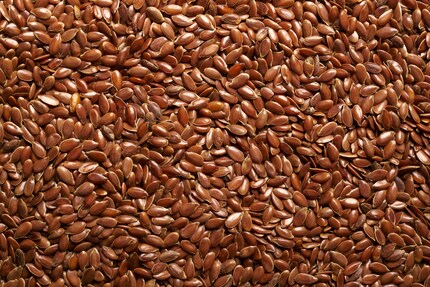
You don’t need to spend 10 Swiss francs on chia seeds when you can buy the same amount of flaxseed for a fraction of the price. Because in terms of their nutritional content, local flaxseeds are just as good as imported seeds from Mexico.
Flaxseed is rich in plant-based omega-3 fatty acids, proteins and calcium. It’s also a source of valuable fibre, which is an important part of a balanced diet and good for healthy digestion. Regularly including flaxseed in your diet also has a positive effect on fat and cholesterol levels.
Like chia seeds, flaxseed is suitable as a plant-based egg substitute, for example in baking. Because it has a gel-like consistency when soaked in water, it’s also great in delicious porridge with other local superfoods, such as oats.
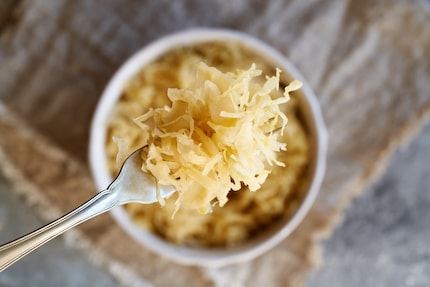
Not everything fermented is a superfood. In the case of sauerkraut, though, it’s true: it contains around twice as much vitamin C as an apple and was eaten by early sailors during week-long crossings to combat scurvy – a fatal vitamin deficiency.
Sauerkraut is currently enjoying a renaissance: not only is its vitamin content impressive, how it’s made is also considered particularly healthy. For the fermentation process, lactic acid bacteria are added to the raw white cabbage – both are good for intestinal flora. Studies show that the probiotics (live bacteria) created during fermentation enrich intestinal flora and make them healthier and more resistant to pathogens. Sauerkraut strengthens healthy intestinal flora, your natural immune system, keeps you fit and healthy overall and tastes particularly good in the colder months.

Small plant-based vitamin and protein bombs can also be found in local peas. They belong to the legume family and are low in calories and fat. In contrast, 100 grammes of peas contain around four grammes of fibre and seven grammes of protein. They also contain a range of vitamins – E, B and beta-carotene – and minerals such as magnesium, iron, calcium and zinc. According to research from Cambridge University, their high mineral and vitamin content appears to prevent diseases such as cancer.
Because they taste really good as a puree and spread, peas make a good alternative to avocado. But they also work very well in warm stews and soups.
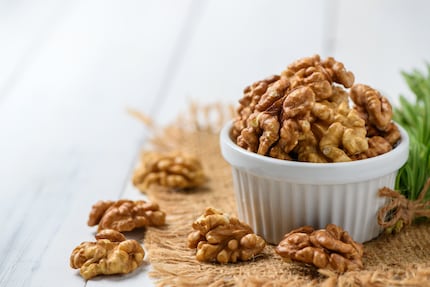
Nuts are healthy – that much is clear. But it doesn’t always have to be Brazilian cashews. Sometimes walnuts from the garden (or from Galaxus) also do the trick. They’re real bursts of energy: 100 grammes contain a remarkable 600 kilocalories, 60 grammes of fat and 14 grammes of protein. Walnut are particularly known for the omega-3 fatty acids they contain: these fatty acids have an important role in the formation of cell membranes, are anti-inflammatory and can prevent diseases such as heart attacks, lupus or arthritis, according to the Harvard School of Public Health.
Walnuts also contain potassium, calcium, magnesium, phosphate, iron and zinc. Their vitamin levels are also impressive, boasting vitamins B1, B2, B6, C, E, folic acid and beta-carotene. You can eat them in several ways: in your morning muesli, as a topping for delicious creamy soups or for a nutty taste in cinnamon rolls, for example.

Millet is considered the ideal domestic counterpart to quinoa, which, as I said, has to travel a long way to Europe. Both types of grain take a similar time to prepare and they even taste alike. Like quinoa, millet is also rich in iron and proteins – with the important difference that it can even be grown in Central Europe.
According to studies, millet can prevent diabetes, obesity and cardiovascular diseases, which is not least due to the secondary phytochemicals it contains.
If you’re gluten intolerant, you can breathe a sigh of relief because you can eat millet without any issues. It works very well all year round in stews, as a wholesome substitute for pasta or even as a base in porridge.
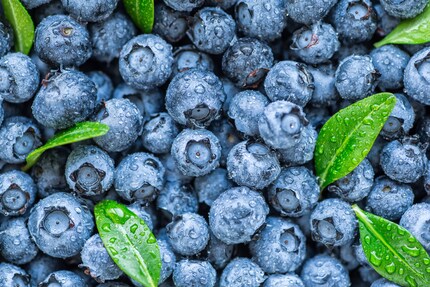
Anyone who has managed to walk through any city centre in recent years without stumbling across countless acai bowl offerings can count themselves lucky. Acai berries have long been the figurehead of the superfood movement in Europe. Not entirely without reason: after all, they contain a lot of antioxidants, magnesium and countless vitamins. However, importing them from Brazil overshadows the superfood movement’s idea of eating super consciously. Local blueberries are a suitable alternative.
Not only are they low in calories, they’re also rich in vitamin C, potassium, zinc, folic acid and iron. Studies even show that blueberries lower blood pressure. The secondary phytochemicals in them seem to keep blood vessels flexible.
In a healthy smoothie, muesli, porridge or just as an occasional snack: blueberries are one of the stars of local superfoods.
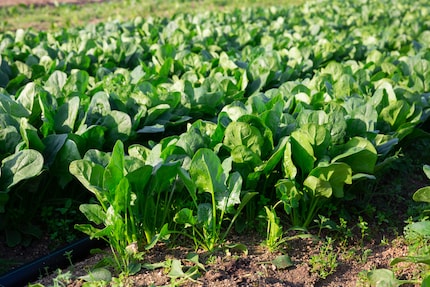
Last but not least – and no less worth mentioning – I’m making the case for spinach. This leafy vegetable is rich in B group vitamins (article in German), vitamin C and beta-carotene, a precursor to vitamin A. They also supply the body with iron, magnesium, calcium and potassium.
Spinach is said to have a number of health benefits. These range from positive effects on eye health to reducing oxidative stress to studies that confirm it has a cancer-preventing effect.
Its health-promoting effects make sense: spinach actually belongs to the same plant family as the superfood quinoa, but it can be grown in any Swiss garden. And, because it reduces a lot in volume when it’s cooked, you can use spinach in large quantities in stews, soups, strudels or even smoothies.
I'm a sucker for flowery turns of phrase and allegorical language. Clever metaphors are my Kryptonite – even if, sometimes, it's better to just get to the point. Everything I write is edited by my cat, which I reckon is more «pet humanisation» than metaphor. When I'm not at my desk, I enjoy going hiking, taking part in fireside jamming sessions, dragging my exhausted body out to do some sport and hitting the occasional party.
Practical solutions for everyday problems with technology, household hacks and much more.
Show all
Guide
by Anna Sandner

Guide
by Olivia Leimpeters-Leth

Guide
by Anna Sandner